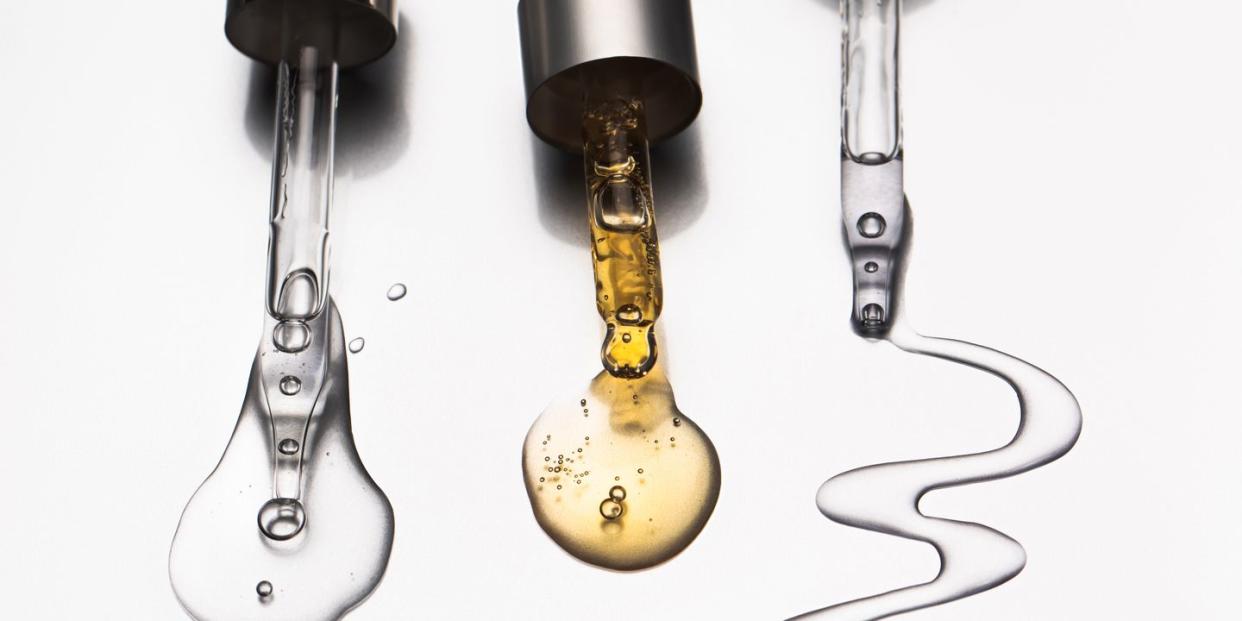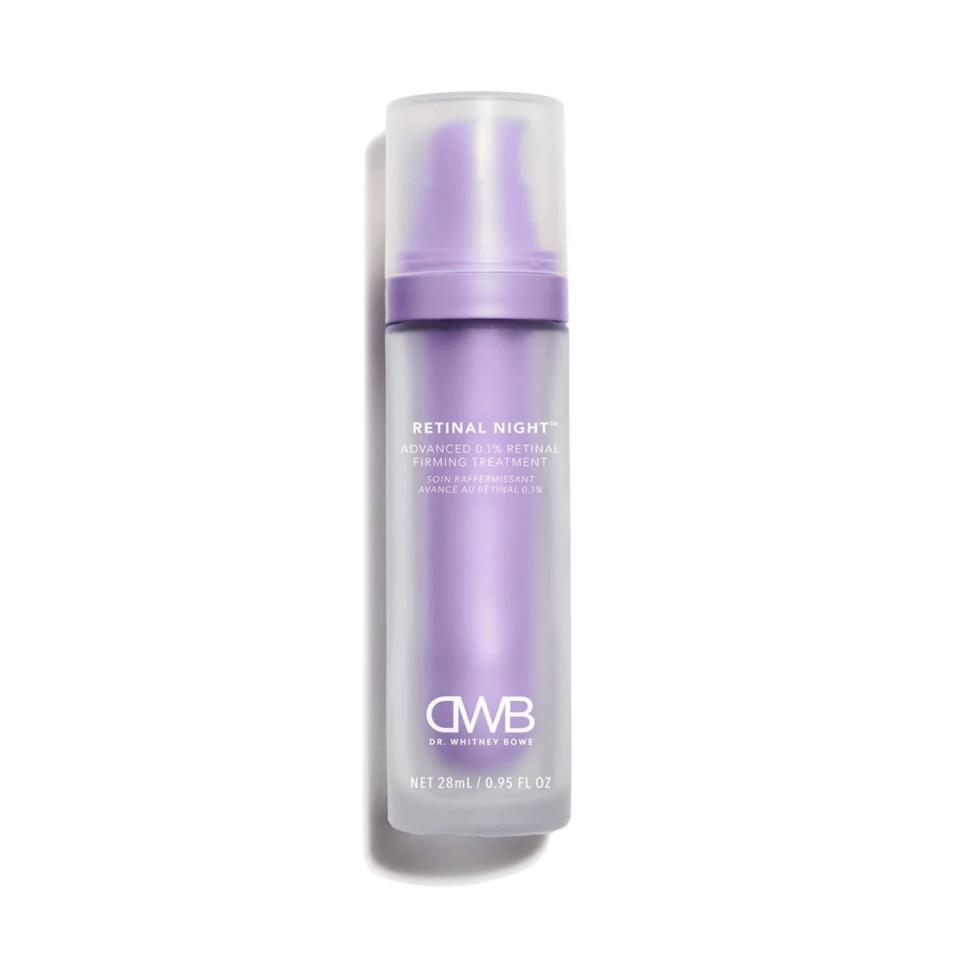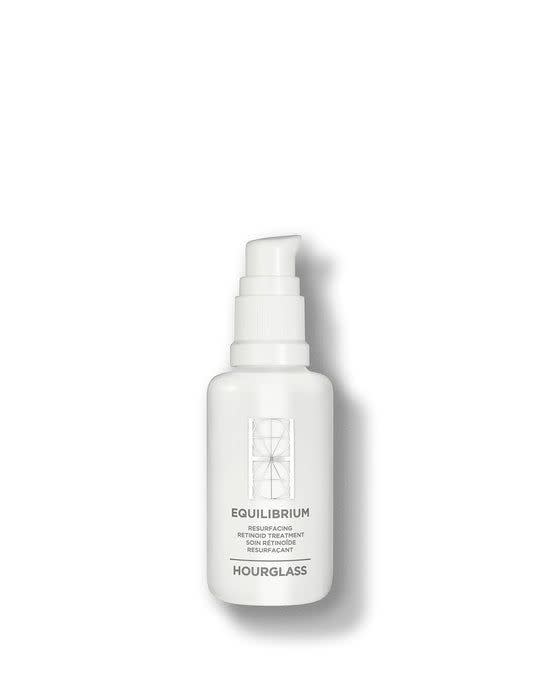What's the Difference Between Retinol and Retinoids?

"Hearst Magazines and Yahoo may earn commission or revenue on some items through these links."
If you're interested in reducing wrinkles and fine lines, chances are retinol will make its way into your vocabulary. Between its abilities to dramatically smooth skin—not to mention help with skin texture and tone, as well as clear up acne—retinol is a superstar ingredient among dermatologists. That said, when we talk about retinol, we are often referring to a whole class of ingredients called retinoids; retinol is just one of them.
We're the first to admit the whole thing can get rather confusing. That's why we tapped Whitney Bowe, dermatologist and founder of Dr. Whitney Bowe Beauty, and Michelle Henry, dermatologist and founder of Skin & Aesthetic Surgery of Manhattan, to explain the differences. Plus, they get into the ingredients that are best suited for each skin type, as well as how to use it in your routine.
What Are Retinoids?
Encompassing ingredients like adapalene, tretinoin, and retinyl palmitate, “Retinoids are a class of skincare compounds derived from vitamin A that can help improve skin texture, reduce fine lines and wrinkles, and treat acne,” explains Henry. “They work by increasing cell turnover, which helps unclog pores, reduce inflammation, and stimulate collagen production.”
However, retinoids can vary in strength, with the strongest being available only by prescription. Bowe compares the different strengths to coffee: “On the strongest end of things, we have retinoic acid. Envision that as comparable to an IV of caffeine fluid—use your imagination here— that’s intense! But, it might not be for everyone,” she says. “On the next level, we have retinal. It’s like a powerful double shot of espresso or a potent cup of coffee. It gives you tremendous impact, but it’s not the same jolt as an IV. So, it’s going to be better tolerated by more people.” Finally, there’s retinol, or the most common ingredient: “We can envision retinol as a drip coffee, but you don’t get to finish the whole cup. So, it’s working, it’s helping, but it’s not anywhere near as powerful as that shot of espresso,” explains the derm.
What Is Retinol?
Though it tends to be used as a catch-all term for retinoids, retinol is actually more granular. “Retinol is a specific type of retinoid commonly found in over-the-counter skincare products,” says Henry. “Although less potent than prescription-strength retinoids, it still has benefits such as improving skin texture, reducing fine lines and wrinkles, and stimulating collagen production.”
Unlike prescription-strength retinoids, retinol has a longer process to go through before it becomes effective. “Retinol needs to first be converted to retinal and then get converted to retinoic acid to get to work in your skin,” explains Bowe.
OK, So What About Retinal?
To make matters more confusing, there is a difference between retinol—with an o—and retinal—with an a. “Retinal, a.k.a retinaldehyde, is often considered to be the most potent vitamin A you can get without a prescription. It's 10 times more bioavailable than retinol, so it works faster, and a lot less is needed to drive impactful results,” says Bowe. Put another way, she says, “Your skin has to do less gymnastics if you choose retinal to address tone, texture, smoothing lines and wrinkles, and firming skin over time.”
Because it is more potent, it’s important to look for a trusted formula so it doesn’t cause irritation. “Look for a product clinically tested on sensitive skin,” says Bowe, adding that the color should be bright yellow (and she should know; she chose to use retinal in her own DWB Retinal Night Advanced 0.1% Retinal Firming Treatment).

Retinal Night
$99.00
drwhitneybowebeauty.com
Which Ingredient Is Suitable for Each Skin Type?
“Retinoids vary in strength, with prescription-strength retinoids being the strongest and fastest acting but causing more skin irritation than over-the-counter retinol products,” says Henry.
Generally, the strongest—and therefore least tolerable—is retinoic acid, which is only available via a prescription from your derm. “It’s also known as tretinoin. It’s the form that is biologically active and binds to the retinoid receptors in your skin and immediately goes to work,” says Bowe. However, “Not everyone can tolerate it, particularly people with sensitive skin.”
But contrary to popular belief, nearly everyone can use some version of a retinoid (unless, it should be noted, you are pregnant or nursing). “Retinoids are suitable for most skin types, but those with sensitive or dry skin may experience more skin irritation and dryness,” says Henry, adding that “It is recommended to start with a lower concentration of retinoids and increase the dosage gradually.”
But those with sensitive skin types shouldn't worry too much: Newer formulas are formulated just for skin like yours. “For sensitive skin, retinol or retinal may be better tolerated than prescription-strength retinoids,” says Henry. “Using formulations that contain soothing ingredients like ceramides, niacinamide, or hyaluronic acid can also help minimize skin irritation and dryness.” Her recommendation: Hourglass Equilibrium Resurfacing Retinoid Treatment, which “performs without being harsh on the skin. Unlike typical retinoids, there is no ramp up time, so you can see results in a shorter amount of time.”

Equilibrium Resurfacing Retinoid Treatment
$110.00
hourglasscosmetics.com
How Should Retinol or Retinoids Be Incorporated Into Your Skincare Routine?
Bowe’s method of using retinol, known as Skin Cycling, has become skincare legend. Here’s how it works:
Night 1, Exfoliation Night: Use a gentle cleanser, pat dry, use a leave-on exfoliating serum, and follow with moisturizer.
Nights 2 and 3, Retinoid Nights: Use a gentle cleanser, pat dry, apply a pearl-sized amount of a retinoid to your face, another for your neck and 2-4 pumps more for the chest. Follow with a non-occlusive moisturizer.
Night 4, Recovery Night: Use a gentle cleanser, a hydrating serum or vitamin C serum, and a nourishing moisturizer.
Whether you follow a skin cycling plan or not, Henry also reminds that with a retinol product, “Following the manufacturer's instructions for frequency and application is crucial, and starting with a lower concentration is recommended.” And, as always, “Sunscreen with a high SPF should be worn during the day.”
You Might Also Like

